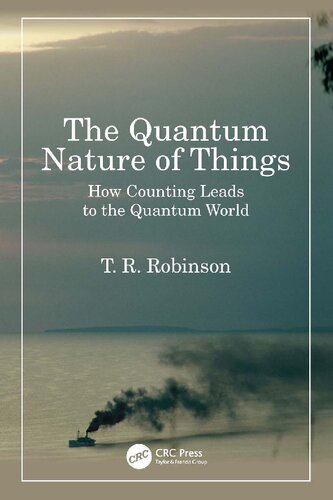

Most ebook files are in PDF format, so you can easily read them using various software such as Foxit Reader or directly on the Google Chrome browser.
Some ebook files are released by publishers in other formats such as .awz, .mobi, .epub, .fb2, etc. You may need to install specific software to read these formats on mobile/PC, such as Calibre.
Please read the tutorial at this link: https://ebookbell.com/faq
We offer FREE conversion to the popular formats you request; however, this may take some time. Therefore, right after payment, please email us, and we will try to provide the service as quickly as possible.
For some exceptional file formats or broken links (if any), please refrain from opening any disputes. Instead, email us first, and we will try to assist within a maximum of 6 hours.
EbookBell Team

4.0
46 reviewsThis book offers readers an entirely original and unconventional view of quantum mechanics. It is a view that accepts quantum mechanics as the natural way to think about the way nature works, rather than the view commonly expressed, especially in books on quantum physics, that quantum theory is weird and counterintuitive. It is based on the concept of itemization.
From this simple premise, quantities like energy and momentum, both linear and angular emerge naturally, as do configuration space, potentials, the electromagnetic field, many-body dynamics, special relativity and relativistic wave mechanics. The many-body dynamics, because it is not tied to physics from the outset, can be applied to population dynamics outside physics as well as the usual physical situations.
From this emerges much of the basic physics that describes, mathematically, how the natural world behaves.
This accessible introduction does not require exotic maths, and is aimed at inquisitive physics students and professionals who are interested in exploring unconventional approaches to physics. It may also be of interest to anyone studying quantum information theory or quantum computing.
Key Features
"What [the author] has done is changed the way of thinking about how to organize the foundations of quantum mechanics and the approach is a very natural one. This is a book that has the potential to be quite an important one in how we understand the origins of the quantum theory.
This is not an ordinary quantum textbook. It is not trying to teach the full curriculum. It is instead focused on showing the origins of quantum mechanics and how it fits into the relativistic and quantum field theory worlds. It is more in line with foundations of quantum mechanics books, but in my opinion, way better than the whole lot of the rest of them. There is no comparison."
― Professor James Freericks, Georgetown University.